After undergoing ankle replacement surgery, patients are often required to be non-weight bearing for several weeks or even months. It’s typical to be non-weight bearing for 6 weeks and then in a CAM boot for an additional 2 weeks.
Maintaining physical fitness and preventing muscle atrophy can be challenging during this time. However, there are several exercises that can be done while non-weight bearing to help maintain strength, flexibility, and overall fitness.
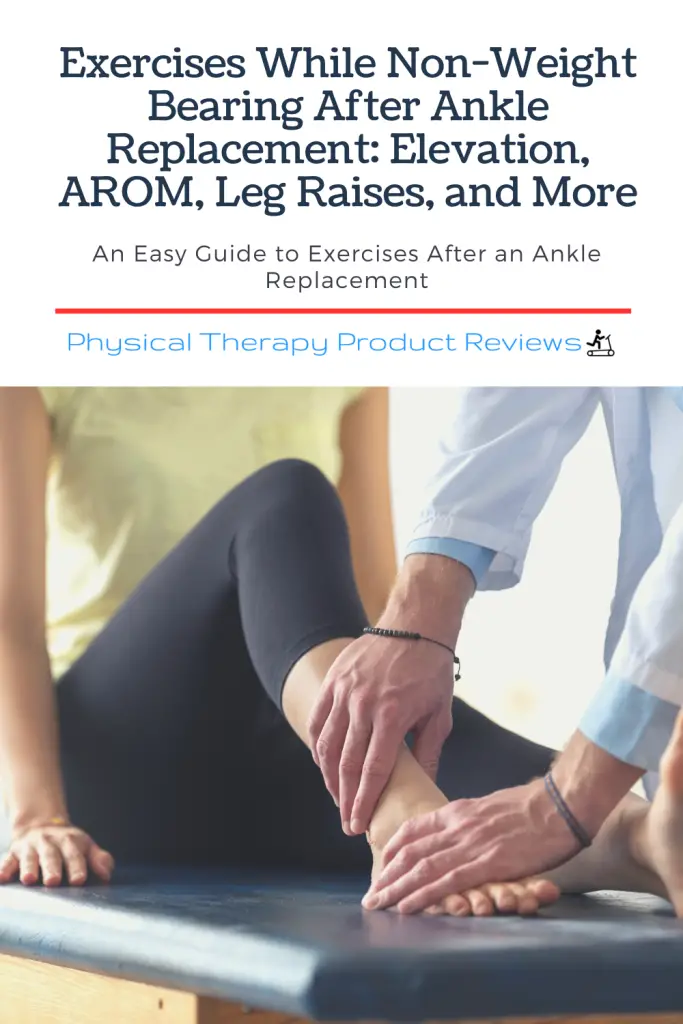
By starting exercises during this time period, you will speed up recovery, limit muscle atrophy, and help reduce pain and stiffness once you’re cleared for walking.
In this blog post, we’ll cover all the ways you can still help your recovery during this challenging time and set yourself up to make a full and speedy recovery.
Table of Contents
Ankle Active Range of Motion (AROM DF/PF)
After an ankle replacement, it is important to maintain an active range of motion (AROM) in the ankle joint. This can help prevent stiffness and improve the overall function of the ankle. One effective exercise for improving AROM is ankle dorsiflexion (DF) and plantarflexion (PF).
To perform ankle DF/PF, sit in a chair with your foot flat on the ground. Slowly lift your foot up towards your shin (DF), then lower it back down. Next, point your foot down towards the ground (PF), then lift it back up. Repeat this exercise 15 times several times to improve your range of motion. Imagine that you get a little further each time you perform this exercise.
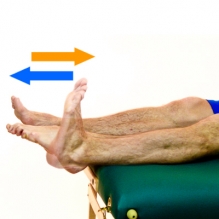
It is important to perform ankle DF/PF within a pain-free range of motion, don’t go as far or as intense if there is pain. Also, note that there is no weight bearing through the ankle, and this exercise is performed in a sitting or lying position.
Regularly performing ankle DF/PF can help improve ankle AROM and overall function after an ankle replacement. Incorporate this exercise into your daily routine to see the best results.
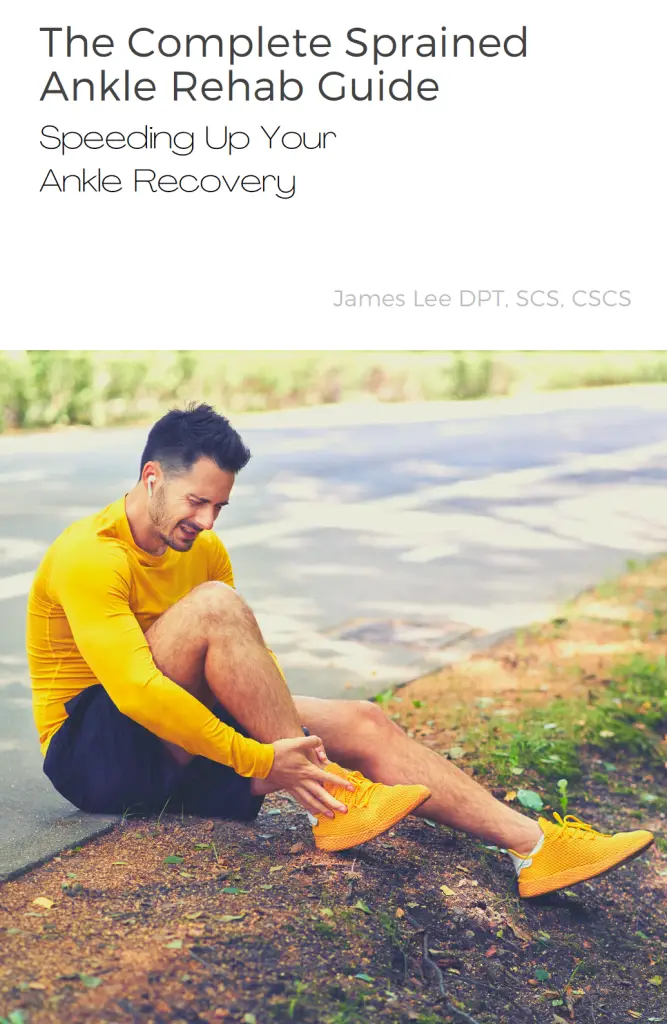
Want to make a full recovery after a sprained ankle? Need to get out of pain? See our complete sprained ankle rehab guide for a self-guided recovery through all the critical phases.
Four-Way Leg Raises Lying Down
After ankle replacement surgery, it is important to maintain strength throughout the whole leg, particularly the hip muscles. The hip and ankle muscles work as a team while walking, running, and maintaining our balance. Four-way leg raises lying down are great exercises to help you achieve this goal. This exercise targets the hip flexors, quadriceps, and glutes.
To perform this exercise, lie down on your back with your legs straight. Keep your arms at your sides, and engage your core muscles. Slowly lift your right leg off the ground, keeping it straight until it is about 12 inches off the ground. Hold for a few seconds, then slowly lower your leg back down. Repeat this exercise 15-20 times, and then repeat with your left leg.
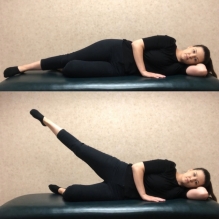
Next, roll onto your left side, and lift your right leg again, but this time, lift it out to the side, keeping it straight. Hold for a few seconds, then slowly lower your leg back down. Repeat with your left leg by rolling onto your right side and lifting the leg up to the ceiling.
Now, roll onto your stomach and lift your right leg again, using your glutes to lift it towards the ceiling, keeping it straight. Hold for a few seconds, then slowly lower your leg back down. Also, perform for 15-20 reps and then repeat with your left leg.
Finally, lying on your right side, lift your right leg again, but this time across your body towards the ceiling. This leg lift is a bit awkward at first and may take some practice to get the hang of it. Hold for a few seconds, then slowly lower your leg back down. Repeat 15-20 reps, and then perform with your left leg by rolling and lying on the left side.
Knee and Thigh Strengthening Exercises
After ankle surgery, it is common for patients to experience a period of non-weight bearing as they recover. Two exercises that can be done in a non-weight-bearing position are knee extension and hamstring curls.
Knee extension exercises are designed to strengthen the quadriceps muscle group on the thigh’s front.
To perform this exercise in a non-weight-bearing position, the patient can sit in a chair with their affected leg straight out in front of them. They can then place a rolled towel or small pillow under their knee to elevate it slightly.
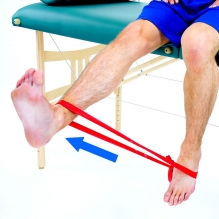
From this position, the patient can slowly straighten their knee, lifting their foot off the ground and holding for a few seconds before lowering back down. This exercise can be repeated for several repetitions, with a goal of gradually increasing the number of repetitions over time.
To make this more challenging, you can use a resistance band looped around both ankles to increase the muscular demand and improve strength.
On the other hand, hamstring curls are designed to strengthen the muscles on the back of the thigh. To perform this exercise in a non-weight-bearing position, the patient can lie on their stomach with their affected leg straight out behind them.
They can then slowly bend their knee, bringing their heel towards their buttocks and holding for a few seconds before lowering back down. This exercise can also be repeated for several repetitions, with a goal of gradually increasing the number of repetitions over time. This exercise can also be progressed by using a resistance band looped around both ankles.
Performing knee extension and hamstring curls in a non-weight-bearing position after an ankle surgery can help maintain overall fitness and prevent muscle atrophy.
Transverse Abdominis Recruitment
After an ankle replacement, it is important to maintain core strength to support the body during the non-weight-bearing stage of recovery. One exercise that can help with this is transverse abdominis recruitment.
The transverse abdominis is a deep muscle that wraps around the abdomen like a corset. It plays a key role in stabilizing the spine and pelvis and can help improve posture and balance. By strengthening this muscle, you can help reduce the risk of falls and other complications during recovery as well as strengthen the back and core.
To perform transverse abdominis recruitment, lie on your back with your knees bent and feet flat on the floor. Place your hands on your lower abdomen, just above the hip bones. Take a deep breath, and gently draw your belly button towards your spine as you exhale. Hold this contraction for 5 seconds, then release and repeat.
You can perform this exercise several times a day, gradually increasing the duration of each contraction as your strength improves. It is important to avoid holding your breath or tensing other muscles during the exercise, as this can reduce the effectiveness of the contraction.
Incorporating transverse abdominis recruitment into your non-weight-bearing exercise routine can help improve core strength and support your body during recovery.
Frequent Elevation of the Ankle Above the Level of the Heart
One of the most important exercises to do while non-weight bearing after an ankle replacement is the frequent elevation of the ankle above the level of the heart. This exercise helps to reduce swelling and prevent the formation of blood clots in the leg.
To perform this exercise, you will need to lie down on your back and prop your ankle up on a few pillows or a foam wedge. Make sure that your ankle is elevated above the level of your heart, and we mean way above the level of the heart. You can also do this exercise while sitting in a chair, propping your ankle up on another chair or ottoman.
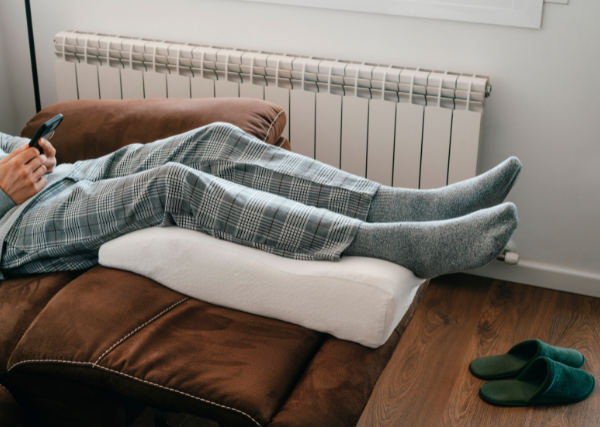
You should aim to do this for at least 20 minutes, four to six times a day. You can do this exercise while watching TV, reading a book, or even while working on your computer.
Overall, the frequent elevation of the ankle above the heart level is a simple yet effective exercise that can help reduce swelling and promote healing after an ankle replacement surgery.
Edema Massage
Edema, or swelling, is a common side effect of ankle replacement surgery and can last up to many months after the surgery. Edema massage can help to reduce swelling and improve circulation in the affected area. This type of massage involves applying gentle pressure to the affected area in a circular motion, moving from the ankle up toward the knee.
It is important to use a light touch when performing edema massage, as too much pressure can actually exacerbate swelling. You can use your fingers or the palm of your hand to perform the massage, and you may want to use a light lotion or oil to help your hand glide smoothly over the skin. Just be sure not to contaminate any open wounds or incisions.
Edema massage should be performed several times daily, for about 5-10 minutes. It is important to take breaks and rest your hand if you start to feel fatigued.
Other techniques that can be used in conjunction with edema massage include elevation of the affected leg, compression stockings, and lymphatic drainage exercises. Talk to your physical therapist or healthcare provider for more information on these techniques.
Conclusion
The non-weight-bearing phase of recovery after an ankle replacement can be long and cumbersome, but it can still be an important and productive time of recovery.
By performing safe exercises that include ankle ROM, knee strengthening, hip leg lifts, and focusing on edema management, you’ll be able to progress yourself more quickly to make a full and complete recovery.
Let us know in the comments if this has helped you during the non-weight-bearing phase of recovery, and check out our other ankle-specific posts.
Disclaimer: The information provided in this post is for educational purposes only. This is not a substitute for a medical appointment. Please refer to your physician before starting any exercise program.
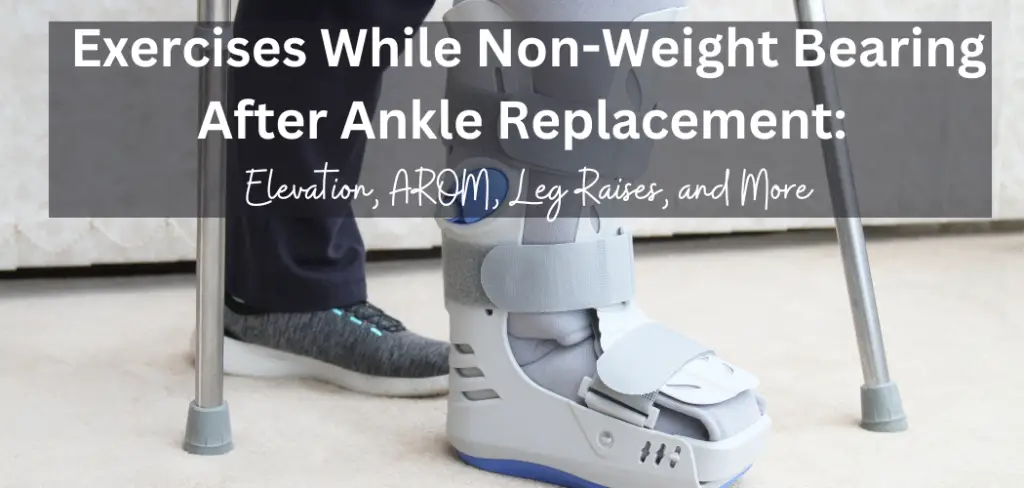

Hi there mates, nice piece of writing and fastidious arguments commented here, I am actually enjoying by these.